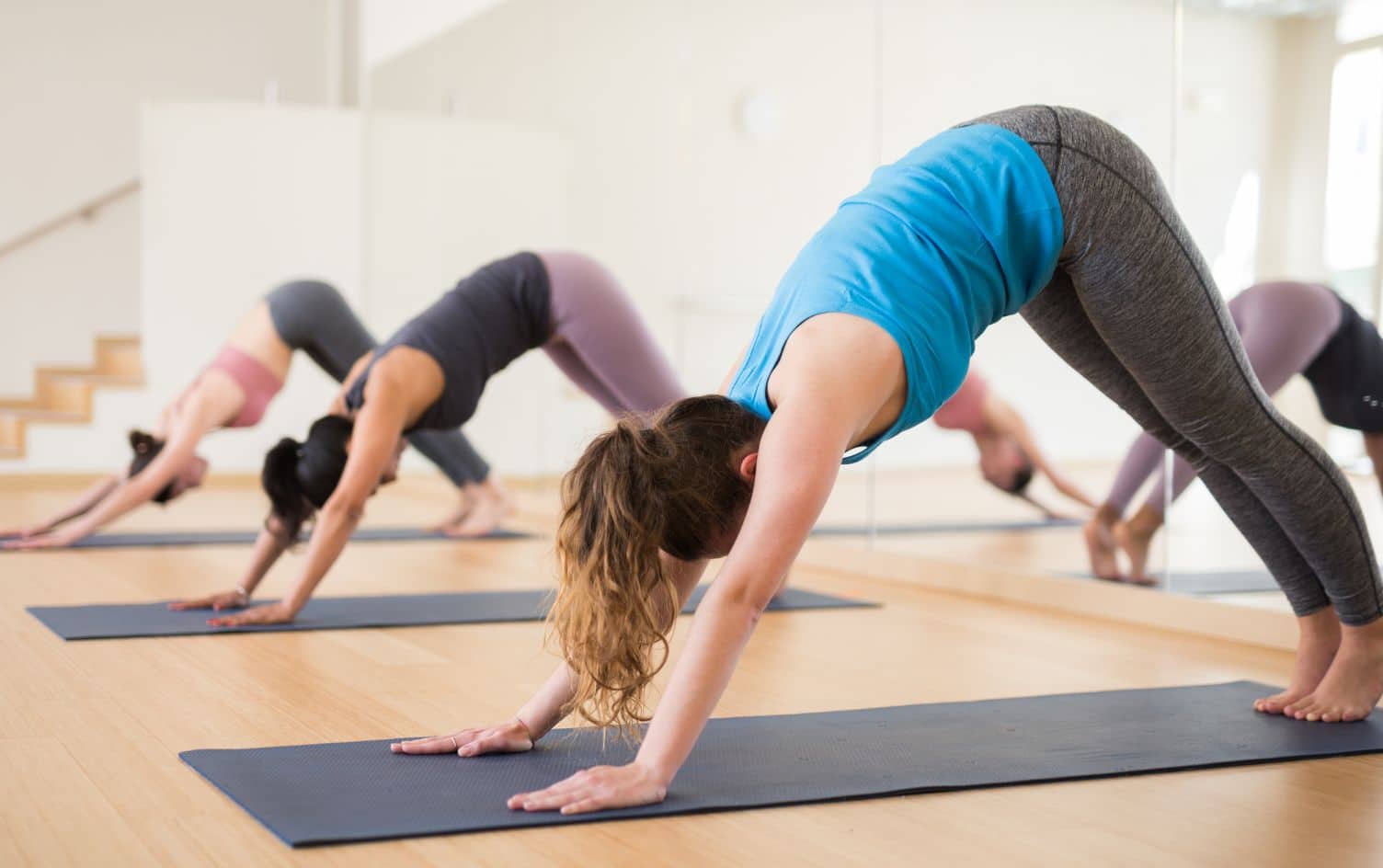If you’ve ever seen photos of someone doing aerial yoga, you may think all that flipping upside down is not for you. While in some classes, yes, you hang from the silks and may do some impressive-looking asanas, there are many styles of aerial yoga — and enough benefits for beginner yogis to try it.
Not to be confused with aerial circus or aerial dance classes, aerial yoga is where you use “fabric or hammocks suspended from the ceiling to adapt traditional yoga poses while being supported by the fabric,” explains Todd Galati, senior director of science and research for the American Council on Exercise. The fabric can be used to make asanas easier or more challenging.
HOW IT HELPS BEGINNERS
If you have a hard time balancing in warrior III, you can put your hands in the hammock for more support. Or if you want more challenge, you can put your back foot in the hammock, explains Carmen Curtis, founder of AIReal Yoga, which has a Yoga Alliance-recognized yoga teacher training program.
“The hammock is a yoga prop that makes yoga accessible to everybody at every level,” she says. “If you have trouble balancing, it can support you. If you don’t have the strength to do a handstand, the hammock holds you so you can do it and get the benefits of the inversion.” And, just like floor-based yoga, there are different styles of aerial yoga such as restorative, yin, power and therapeutic, she adds.
THE BENEFITS OF AERIAL YOGA
A true aerial yoga class isn’t learning tricks, one after the next. Instead, it should have a flow just like a floor-based class and the instructor will guide you on when to inhale and exhale, giving modifications so all poses are accessible, Curtis explains. Basically, the hammock is a prop, just like a yoga block or strap. “The hammock allows people to be successful and feel safe,” Curtis says. “It forces you to always find your center and balance,” so you learn proper alignment and progress and try more challenging variations from that solid foundation.
It can also be a great workout. In a study by the American Council on Exercise, researchers found that aerial yoga counts as moderate-intensity exercise. Plus, taking three 50-minute aerial yoga classes a week for six weeks may decrease your risk of coronary heart disease by 10% thanks to increasing “good” HDL cholesterol; it may reduce the risk of mortality by 15% thanks to increasing VO2 max (a measure of cardiorespiratory fitness).
Other claimed benefits, such as less back pain and decompressing the spine, are only anecdotally proven at this point. “In teacher trainings, back pain is one of the biggest benefits people talk about,” Curtis says. “You don’t need to be inverted. Having the hammock hold you will decompress the spine. That creates circulation between the vertebrae, which decreases inflammation and allows for more mobility of the spine.”
As with any physical activity, aerial yoga comes with precautions. If you have high blood pressure, cataracts, glaucoma or if hanging upside down causes discomfort or medical complications, it’s best to avoid aerial yoga. If you have any concerns, “ask the facility and instructor. Be open and honest about any medical conditions you have or anything going on in your life physically,” Galati recommends.
GETTING STARTED
If you’re interested in trying a class, also find a studio registered with the Yoga Alliance (RYS) and an instructor who is certified in both floor-based and aerial yoga. “It’s important for the teacher to know proper alignment of floor-based yoga so they can safely guide an aerial yoga practice,” Curtis says.
Lastly, she recommends asking who rigged the hammocks and if it’s safe. “Yoga is only safe when done correctly,” she says. “Those who are using certified instructors and aerial-rated gear and have used professional aerial riggers for the hammock installations will be confident to tell you they did it right.”




